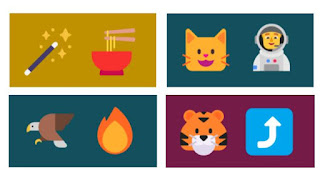The importance of nonfiction in our library
I was honored and humbled to be interviewed by Amy Hermon for her fabulous podcast School Librarian's United. Our initial conversations revolved around the topic of nonfiction which is near and dear to my heart.
This post is a departure from my traditional blogging of a lesson or a unit that happened in our library, rather it is a compilation of thoughts and activities about nonfiction. Here we go!
In my opinion, non-fiction books are appealing, especially to developing readers because...
Where do you start when your entire collection is outdated? (I have found myself in this position twice in my last two libraries). Start with your needs.
Earlier this year the entire school was immersed in nonfiction during a Lucy Calkins unit of study. I took the opportunity to extend the learning in the library. Here are some of the activities and reflections from that time:
This post is a departure from my traditional blogging of a lesson or a unit that happened in our library, rather it is a compilation of thoughts and activities about nonfiction. Here we go!
How our library supports what is happening in classrooms. And the data to prove it. #msla #tlchat #UAELibrarians pic.twitter.com/37DDP3q4tU— Wendy Garland (@dancelibrarian) January 17, 2020
This was my January. Nonfiction books were flying off the shelves. Students were reading nonfiction in classrooms, at home, and doing related activities in the library. The shelves were a disaster. They were picked over. At times it looked like a tornado had come through. I was thrilled!The #nonfiction section of our library. Can you tell the entire school is reading nonfiction books? Shelves are very empty. What remains is an unorganized disaster. I love it! They are reading! #msla #tlchat pic.twitter.com/NsgI9aKyih— Wendy Garland (@dancelibrarian) January 17, 2020
Why do I love nonfiction?
In my opinion, non-fiction books are appealing, especially to developing readers because...
- the photos and graphics break up the text.
- these books look a lot less intimidating.
- you don't have to start on page 1 and read consecutively to the end. You can jump around.
- they have photos and diagrams with captions. You can read THESE and still be reading.
Where to start?
Where do you start when your entire collection is outdated? (I have found myself in this position twice in my last two libraries). Start with your needs.
- Curriculum needs (Overwhelming I know, but is there a particular unit for each grade you could start with)?
- Faculty needs (Ask them what they want/need)!
- Who are your students?
- I asked my ELL teacher for a list of the countries where our students are from and I purchased books about these countries (and then created a countries/states section of the library for easy browsing). This is one of the most popular sections of our non-fiction collection.
New country books r here. ESL teacher listed countries students r from. Small sampling of our Ss heritage. pic.twitter.com/KeM93IV2eb— Wendy Garland (@dancelibrarian) February 6, 2014
- What do your students want/need?
- Ask them! I have used traditional and not-so-traditional ways to get their input.
— Wendy Garland (@dancelibrarian) October 20, 2016

Students are lined up to write on the windows. Gotta love window markers!

Reader Leaders polled students when I charged them with spending money our PTO gave us.
- Students who make special requests always get first dibs on the book when it arrives in our library.
Other tricks of the trade/resources
- Series!
- When I find a publisher and/or series that appeals to my students, I go with it! A 3rd grader told me that he always reads pages 22-23 in his state books first because he always wants to know what food is famous in the state. He KNOWS how the book works and he LIKES it!
- The experts
- Consult experts in the field. I always look to Melissa Stewart, Jess Keating, Sarah Albee, Loree Griffin Burns, and Michelle Knott for fabulous recommendations!
- Online resources
- Unite for Literacy is my go-to for fabulous, free nonfiction!
- You!
- Take inventory of what you share with students. What is the percentage of fiction to nonfiction read alouds? Librarians are fabulous at analyzing collections. Take some time to analyze you and what you present to your students. They get excited about what you share!
Nonfiction activities
Earlier this year the entire school was immersed in nonfiction during a Lucy Calkins unit of study. I took the opportunity to extend the learning in the library. Here are some of the activities and reflections from that time:






Comments
Post a Comment